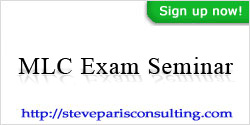« Geico, Google On Collision Course | Main | General insurance staff to go on strike on Dec. 21 . . . Because of outsourcing . . . in India? »
December 15, 2004
Survey Shows Consumers are Unaware of Increase in Fake Insurance
At this time of year, there is no room in the budget for purchases that do not deliver value. Yet, the General Accounting Office reports the number of fake insurance policies sold to consumers is on the rise, resulting in $252 million in unpaid health insurance claims alone.
According to a survey released today, conducted by the National Association of Insurance Commissioners (NAIC), most of the public (74 percent) is unaware of the rise in fake insurance sales and the need for increased vigilance when purchasing insurance.
The survey also revealed that most Americans feel the information available from their state insurance department could be helpful in avoiding fake insurance (83 percent), but only 8 percent of adults surveyed said they have contacted their state insurance department to confirm the validity of an insurance provider before making a purchase.
As part of the United States' fight against the rise in fake insurance, the NAIC has launched a nationwide awareness campaign that encourages consumers to "Stop. Call. Confirm." before buying insurance.
"In the area of fake health insurance alone, the General Accounting Office reported 144 fake health insurers nationwide sold bogus policies to more than 200,000 policyholders between 2000 and 2002," said Diane Koken, NAIC president and commissioner of the Pennsylvania Department of Insurance. "This is simply unacceptable."
According to most states' laws, with very few exceptions, no insurance product can be sold by individual agents, brokers, or companies without the approval of the state insurance department. Fake insurance is any insurance plan intended to defraud consumers or businesses.
Everyone is at risk
"Fake insurance can touch anyone at any time with potentially disastrous results," said Koken. "Frequent targets of unauthorized health insurance plans are older adults and small businesses or associations looking to reduce health insurance costs."
Fake insurance is attractive because it is typically less expensive than legal policies. But that is because a fake policy does not provide sufficient - if any - coverage.
As a result of fake insurance policies, honest people and businesses are swindled, health is endangered, premiums stay high, and goods and services cost more.
Protecting yourself is easy
The NAIC recommends, if not absolutely sure you are dealing with a reputable, licensed insurance provider, look for three warning signs of fake insurance:
- Aggressive marketing and a high-pressure, "you must sign today" sales approach with lots of fine print and disclaimers
- Premiums that are 15 percent or more under the average price for comparable insurance products on the market
- Few coverage limitations
How can you protect yourself against fake insurance? The NAIC urges you to
STOP ... CALL ... and CONFIRM before buying insurance:
- STOP before signing anything or writing a check
- CALL your state insurance department; contact information is available at http://www.naic.org
- CONFIRM the company is legitimate and licensed to do business in your state
"If consumers will stop, call, and confirm before they buy insurance, they may save themselves the pain of unpaid claims," said Koken. "They also can help us track down and take action against the con artists who sell fake insurance."
About the survey
The poll was conducted as part of the Caravan telephone omnibus service of ORC International. It is based on telephone interviews conducted Nov. 11-14, 2004, with 1,013 adults in the United States who are 18 years of age and older. Half of the interviews were with women (50 percent) and half were with men (50 percent). The sample of telephone exchanges was based on random digit dialing to permit access to both listed and unlisted numbers. The results also have been weighted to take into account age, gender, race, and geographic region. In theory, the sampling error associated with these results is plus or minus three percentage points at a 95 percent confidence level.
Posted by Tom Troceen



